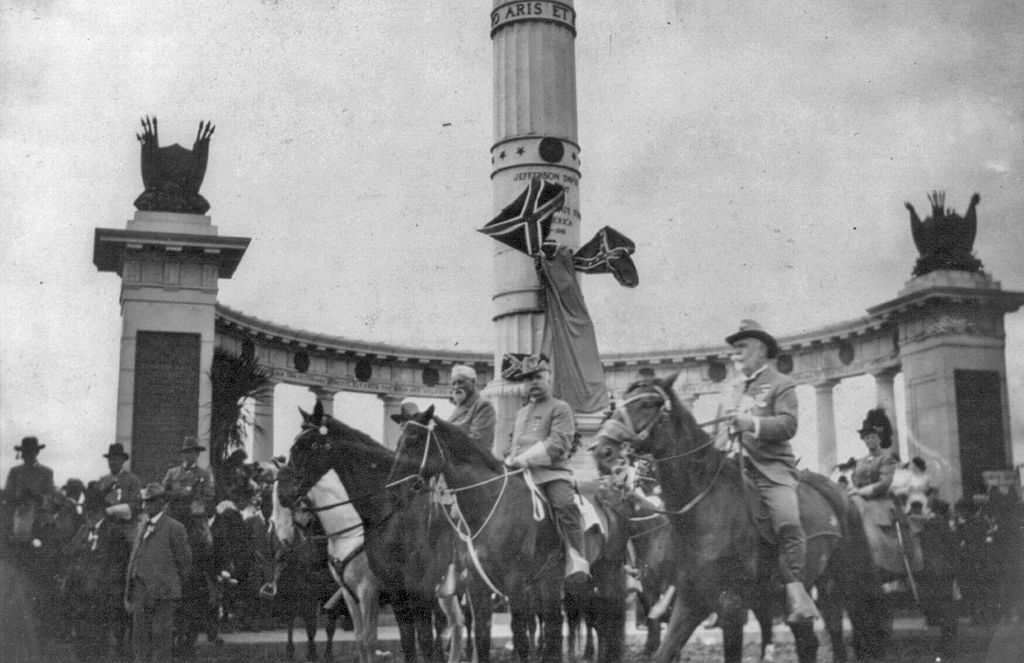Something about Arthur Ashe elevates him into the mythology and lore of Central Virginia. It goes beyond his legacy as a tennis great, beyond his positive contributions to the community around his hometown of Richmond. As a black man who grew up during the Jim Crow era, Ashe rose above segregation and injustice to become one of the greatest tennis players of his era. And despite his dislike for the city that had visited cruelty upon him as a child, he returned in later years to hold tennis clinics for underprivileged youth enduring the same struggles he faced in his own youth.
Perhaps this is what inspires the great love Ashe still receives in Richmond, a quarter-century after his tragic death due to AIDS-related pneumonia in 1993 at the age of 49. Two decades ago, he became the only black Richmonder memorialized with a statue on Monument Avenue. And this year, Richmond City Councilwoman Kim Gray has proposed renaming one of the city’s main thoroughfares Arthur Ashe Boulevard.
Ashe’s character led him to overcome the systematic injustice of his time; his is certainly a story worth celebrating. Yet for city officials seeking to connect with today’s black community, Arthur Ashe is also something of a safe name to invoke. From the history of slavery, lynchings, and injustice represented by the rest of the statues on Monument Avenue to the problems Richmond’s underprivileged communities face today — crumbling schools and the city’s eviction rate, which is the highest in the country, foremost among them — there’s a lot that those who seek easy political points through the use of Ashe’s name are avoiding.
In addition to the statue of Arthur Ashe, Monument Avenue features statues commemorating five Civil War-era political and military figures, all of whom were on the Confederate side of that conflict. While many today see these statues as lacking modern political context, the fact that their history is inextricable from that of the post-Civil War Lost Cause movement indicates otherwise.
The Lost Cause movement, most prominently represented in Richmond today by the United Daughters of the Confederacy (UDC), is heavily invested in the creation of a certain narrative regarding the pre-Civil War past. Getting its start in the decade following the end of the Civil War, the Lost Cause movement argues that slavery was an unimportant factor in the war, ignoring secession statements and pre-Civil War declarations by former members of Congress who left the Union to join the Confederacy.
The narrative pushed by the UDC and the Lost Cause movement instead, one of overwhelming Northern aggression against a valorized yet ill-defined “Southern way of life,” is strongly promoted by the statues displayed on Richmond’s most beautiful and troubling thoroughfare, Monument Avenue.

George Washington Custis Lee (1832–1913) on horseback in front of the Jefferson Davis Monument in Richmond, Virginia on June 3, 1907, reviewing the Confederate Reunion Parade. Public domain/via Wikimedia
The Lost Cause narrative became so pervasive during the era in which the monuments to Confederate General Robert E. Lee, Confederate President Jefferson Davis, and other Confederate figures were erected that it showed up in textbooks taught in Virginia schools until as recently as four decades ago. A 1914 Virginia History textbook, School History of Virginia by Edgar Sydenstricker and Ammen Burger, contains this quote regarding the life of a slave: “There were some cruel and inconsiderate masters, of course; but they were exceptions. … As a general rule the slaves were happy and contented and were faithful to their owners.” A 1957 textbook called Virginia: History, Government, Geography suggested that slaves were perfectly happy with their situation.
The happiness of these slaves is most famously belied by the incident that took place on August 21, 1831 in Southampton County, Virginia. That day, Nat Turner led a rebellion that resulted in the death of sixty white men, women, and children. Killing children is troubling, but so is slavery — infamously, millions of Africans died while being transported against their will to the Americas — and once they arrived in the US, their infant mortality rates were double that of white Americans of the era.
In this context, Nat Turner’s rebellion, despite its death toll, is more understandable. It wasn’t an isolated case in Virginia either. Take Brother Gabriel, who on October 10th, 1800, was hanged in Richmond, Virginia along with his two brothers and 23 other slaves for planning a revolt. In 2017, the decision to create an emancipation-themed statue in Richmond that included both Turner and Gabriel caused significant controversy, with some social media commenters comparing Turner to Hitler. Yet for over a century, the African-American community of Richmond has had to look at monuments glorifying Civil War generals who fought to keep their ancestors enslaved.
The decision to push back against this narrative by creating the Arthur Ashe statue on Monument Avenue was certainly understandable, and the push to rename Boulevard after Ashe makes sense in that context. Ashe was a great man, and stands as a clear symbol of Richmond’s growth from a place that was hostile to an entire community of people, based on nothing more than skin pigmentation, into a more diverse and progressive city.
Last week, a meeting about Councilwoman Gray’s proposal was held at the VMFA. Ashe’s nephew, David Harris, cited the city’s respect for Ashe and his legacy, as well as the ways in which he made the world a better place, in his argument in favor of the name change. Local residents in favor of the initiative agreed, described it as an opportunity for Richmond to celebrate the life of a local Richmonder and the spirit and ability he showed by persevering and achieving high levels of success in tennis, and in civic activity.
However, even those who were in favor of celebrating Ashe’s legacy were divided to some extent. One man suggested changing the name of Belvedere Ave rather than Boulevard. Even Councilwoman Gray admitted that the Arthur Ashe Community Center is currently in need of repair. And some longtime residents of Boulevard, who claimed they’d be more affected by those who favored the change, spoke of the identity they had formed over the decades, helping bring the neighborhood back from its neglected status in decades past.
As more and more citizens came forward to give their opinions on the name change it became clear that more was at stake than simply celebrating a local Richmonder. And this is really the crux of the matter: as Richmond struggles to come to terms with the full scope of the city’s history in order to collectively make a better present, is this really the best use of our resources? The city’s schools are underfunded, public housing has been plagued with issues, and Richmond’s eviction rate is one of the highest in the country. At a time like this, half-measures that constitute easy political wins do little, especially when there are real, tangible ways to begin to come to terms with the past and create a better future for Richmond’s African-American community, and for the city as a whole.



